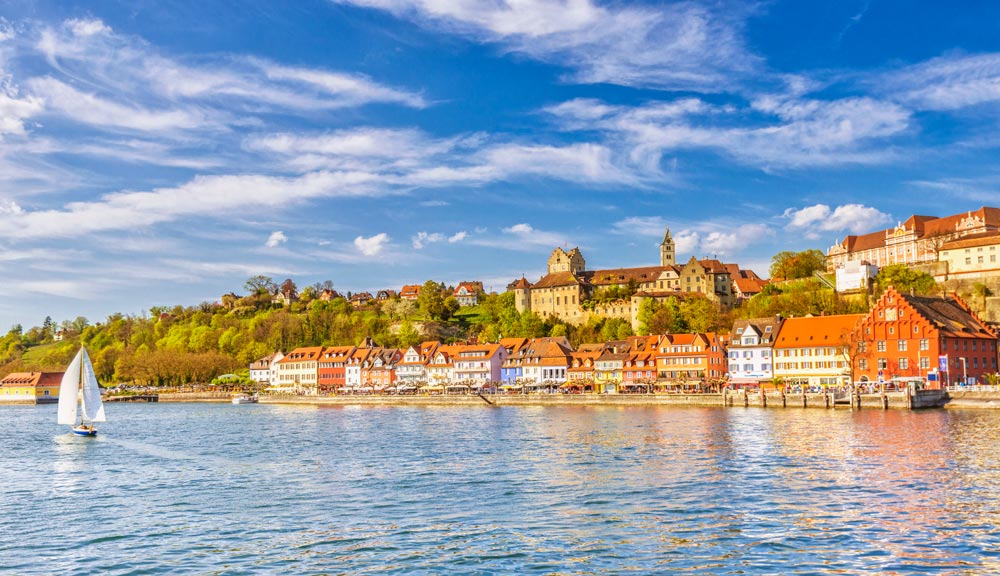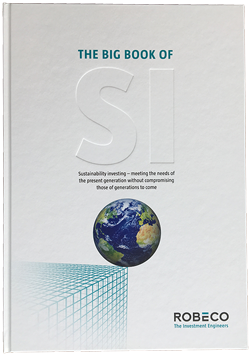Cleaning up one of the world’s dirtiest industries requires a total rethink of supply chains. Now a top priority for major brands, investors with an eye on sustainability should watch progress closely.
Lake Constance was once one of the Europe’s most important waterways.
Bordering Switzerland, Austria and Germany, for centuries it played host to thousands of clothing mills.
But in November 1986, disaster struck. An enormous fire at a warehouse upstream near Basel resulted in 30 tonnes of chemicals being released into the Rhine River, contaminating the water and causing devastation to local ecosystems. [1]
The local community were warned not to leave their homes while the authorities determined just how dangerous the air pollution was. Drinking from the tap was also off limits as tests were made to determine the scale of the chemical contamination.

The explosion was alarming too for the international community as the Schweizerhalle disaster (as it became known) happened just three months after Chernobyl – widely considered as the most catastrophic nuclear power plant accident in recent history.
Shocked into action, focus quickly turned in Switzerland to preventing any such environmental catastrophe happening again.
Politicians and prominent members of the chemical industry came together to draft news laws around the control and use of chemicals and the prevention of water pollution. The biggest polluters it was decided, would be charged.

The explosion was alarming too for the international community as the Schweizerhalle disaster (as it became known) happened just three months after Chernobyl – widely considered as the most catastrophic nuclear power plant accident in recent history.
Shocked into action, focus quickly turned in Switzerland to preventing any such environmental catastrophe happening again.
Politicians and prominent members of the chemical industry came together to draft news laws around the control and use of chemicals and the prevention of water pollution. The biggest polluters it was decided, would be charged.

Textile dyeing
The World Bank estimates that 17 to 20 percent of industrial water pollution comes from textile dyeing and finishing treatment given to fabric, this makes it the second largest polluter of clean water globally, after agriculture. [2] Some 72 toxic chemicals have been identified in water solely from textile dyeing, 30 of which cannot be removed.
Having witnessed its impact first-hand the Swiss government were understandably keen to penalise the worst wastewater offenders. They increased handling costs fivefold, hitting the local textile industry hard.
Mills had to adapt to this environment or face going out of business. Many did fold, not just because of increased costs, but also because of substantially lower labour costs in emerging markets.
By following the cheap needle around the world, the lessons from Schweizerhalle went largely unnoticed. That is until now.
Thanks to the rise of mass production, supply chains have grown longer and more complex, with few controls as to how garments are being made at each stage and if they are complying with regional checks and balances.
There is still no strict global regulation on the use of specific toxic chemicals in the textile industry, however considering the fashion industry is valued upward of $2.4 trillion dollars, and if it were ranked alongside individual countries’ GDP, it would represent the world’s seventh largest economy [3] – then the potential for the issue to get out of hand is considerable.
Big brands from all corners of industry are waking up to that threat and are therefore beginning to re-examine their production processes. And it’s not just about ensuring reputations remain intact, the commercial rewards for implementing sustainable practices from the moment cotton is planted, to the point a customer walks out the store door – are hard to ignore. An international study by Unilever in 2017 revealed more than one in five (21%) of the people surveyed [4] said they would actively choose brands if they made their sustainability credentials clearer on their packaging and in their marketing.


More than nice-to-have
On this evidence alone the multinational consumer giant estimated the potential untapped opportunity at €966 billion, out of a €2.5 trillion total market for sustainable goods. [5]
Unilever said the study’s findings uncovered an ‘unprecedented opportunity’ for companies to cater to this more socially and environmentally aware consumer.
Commenting on the report’s release Keith Weed, Unilever’s chief marketing and communications officer said: ‘This research confirms that sustainability isn’t a nice-to-have for businesses. In fact, it has become an imperative.’
He added: ‘To succeed globally, and especially in emerging economies across Asia, Africa and Latin America, brands should go beyond traditional focus areas like product performance and affordability. Instead, they must act quickly to prove their social and environmental credentials and show consumers they can be trusted with the future of the planet and communities, as well as their own bottom lines.’
Back in Switzerland someone all too aware of the financial imperative of cleaning up the fashion industry is Jill Dumain.
During a thirty year career at California based outdoor clothing company Patagonia, she helped pioneer a sustainable approach to the company’s supply chain management through a strategic partnership with Switzerland based Bluesign Technologies.
Bluesign Technologies’ insight proved so valuable as it had emerged from the Schweizerhalle disaster with expertise in the safe management of chemicals.
Now based in St. Gallen and the firm’s CEO, big global brands such Adidas, Nike and Puma are turning to Dumain to help them eradicate harmful substances from their products.
Watch our documentary mini-series to find out how titans of industry are learning to deliver what increasingly environmentally and socially minded consumers want to buy.

[1] https://link.springer.com/article/10.1007/s11356-009-0156-y
[2] https://file.scirp.org/pdf/NS20120100003_72866800.pdf
[3] International Monetary Fund, “List of Countries by Projected GDP”, October 21, 2016, http://statisticstimes.com/economy/countries-by-projected-gdp.php


